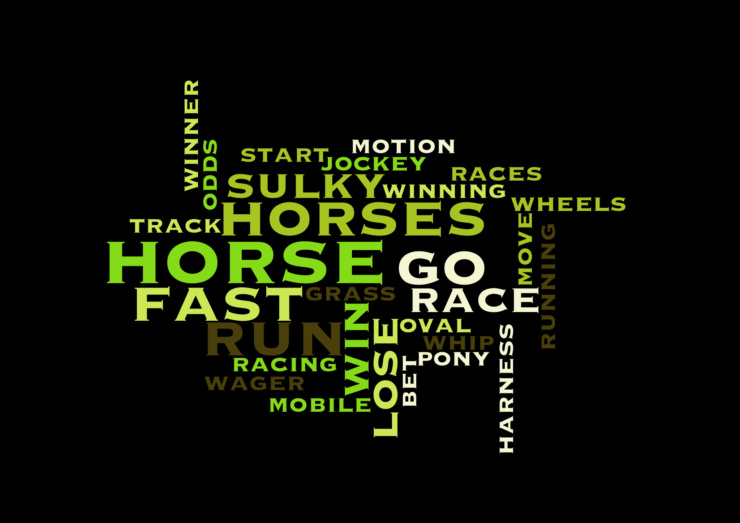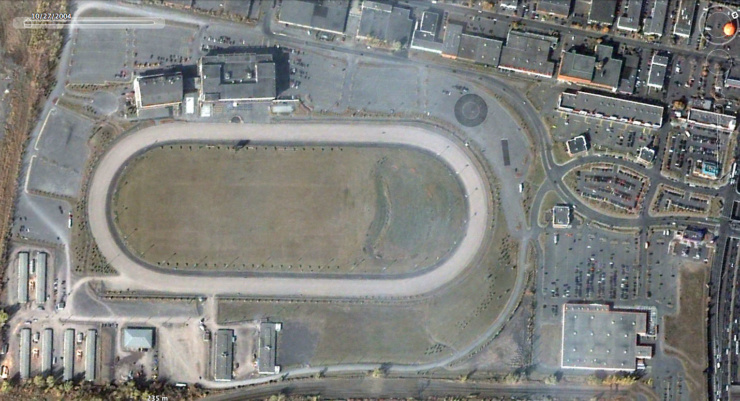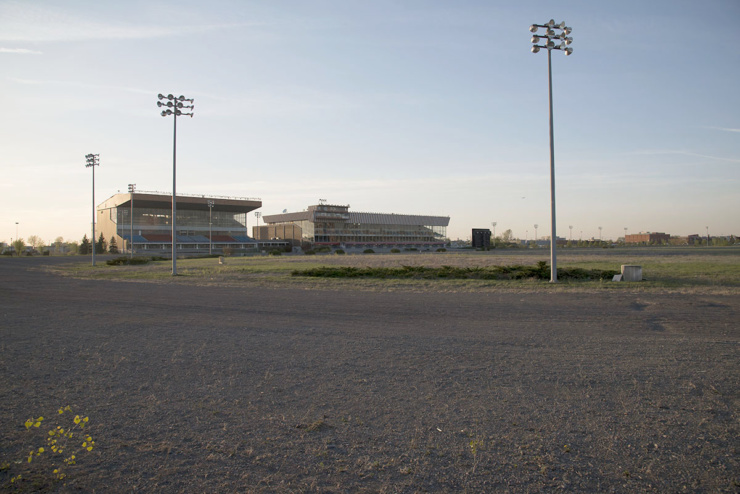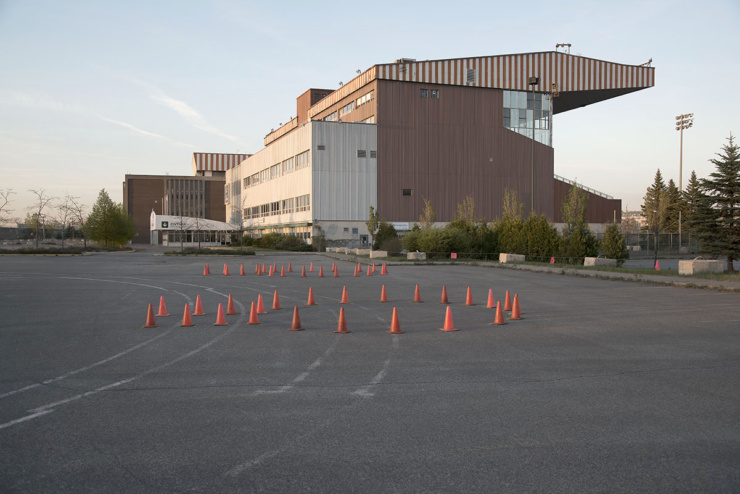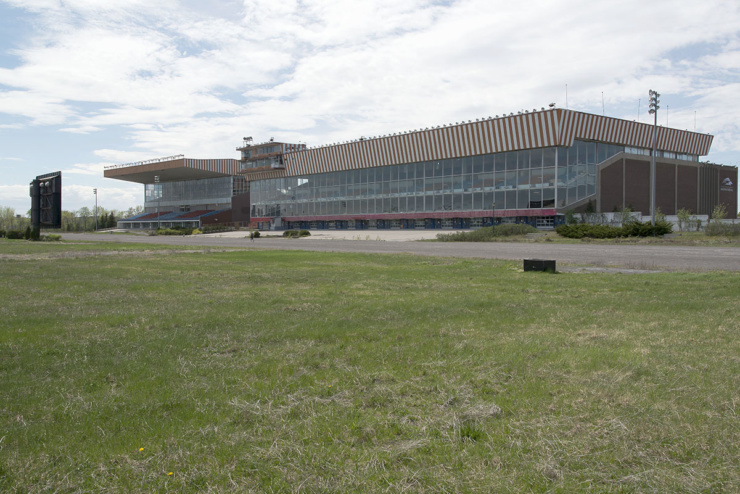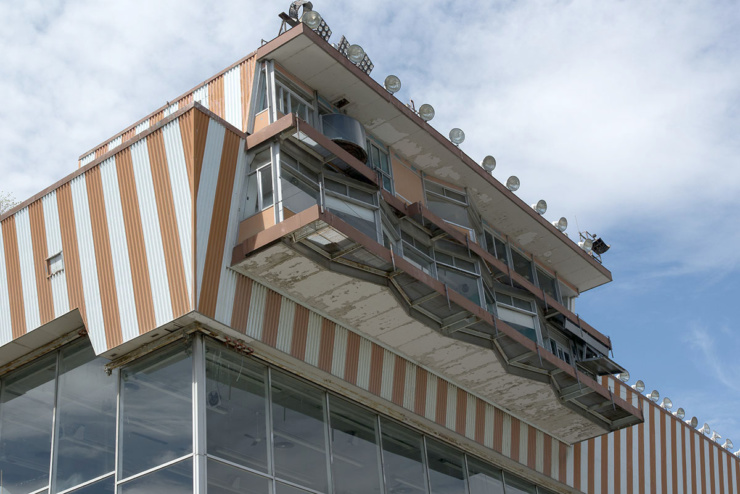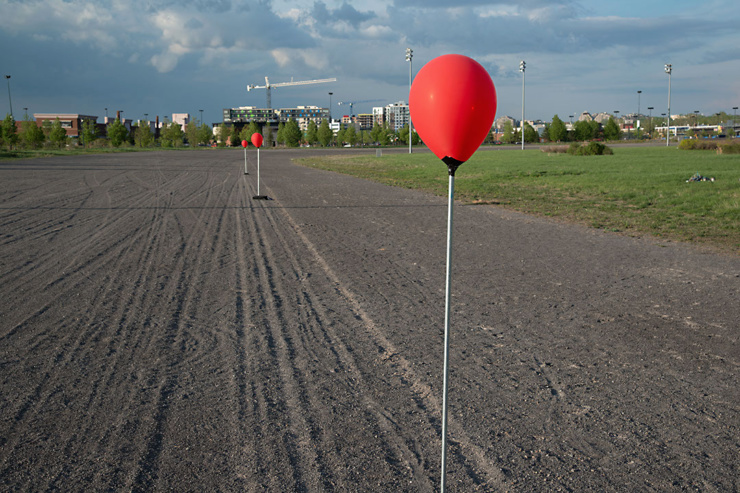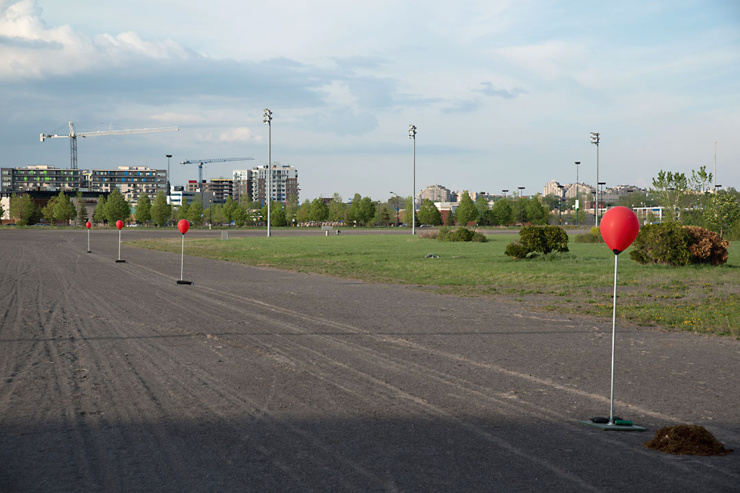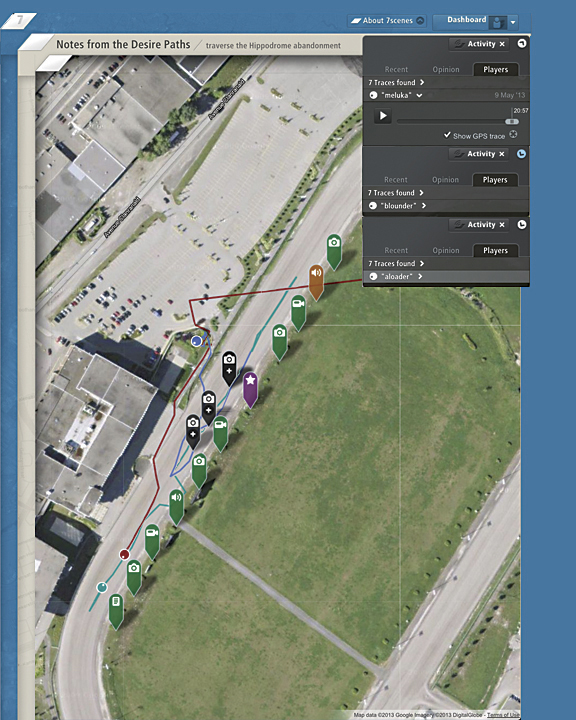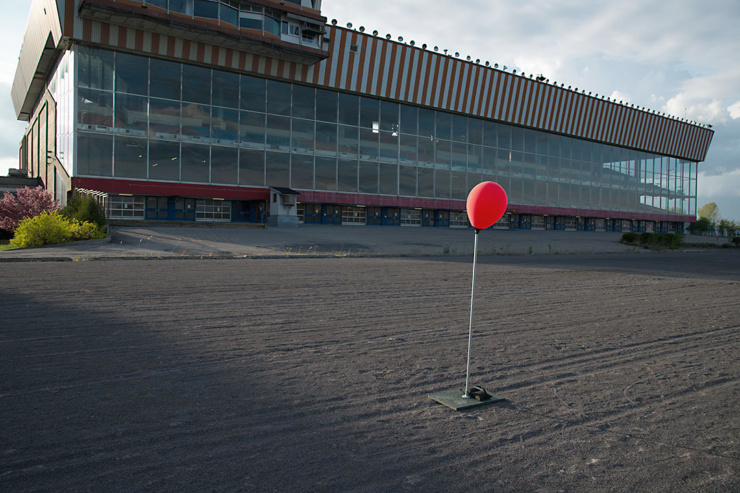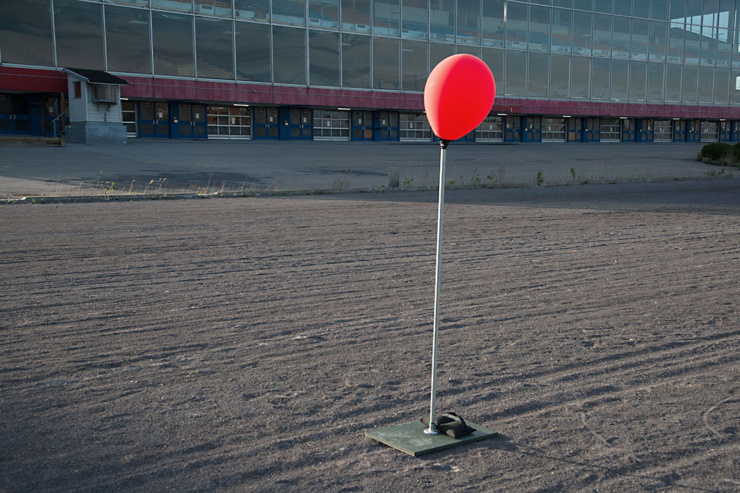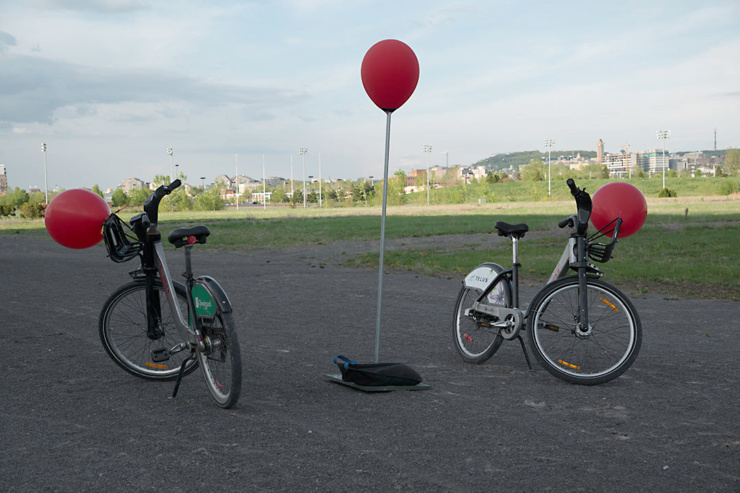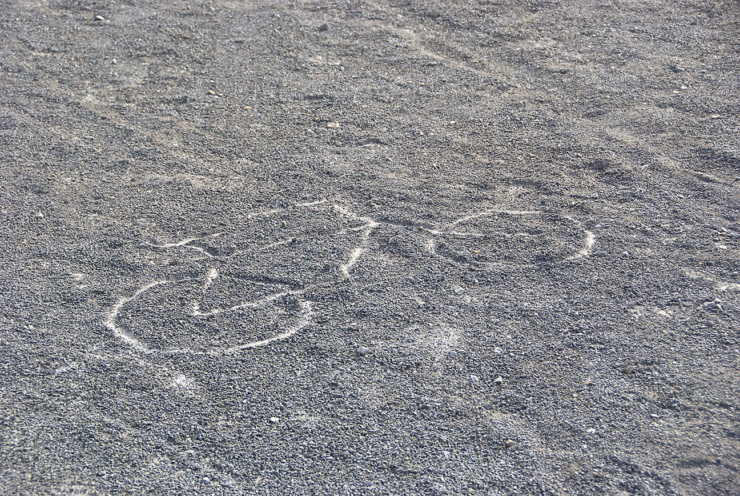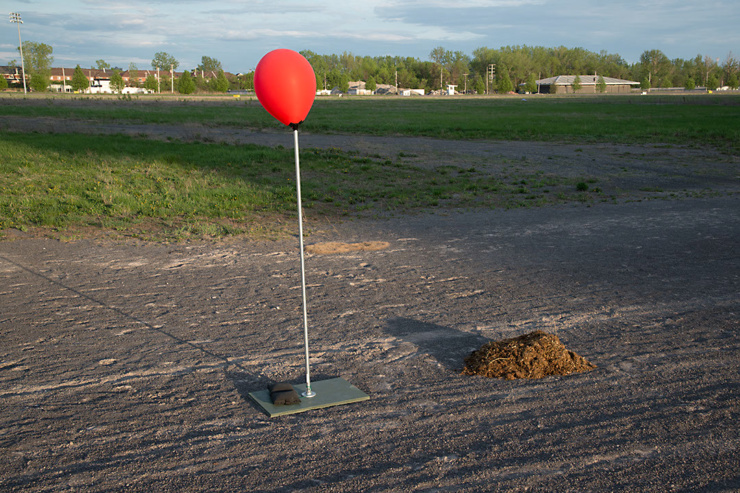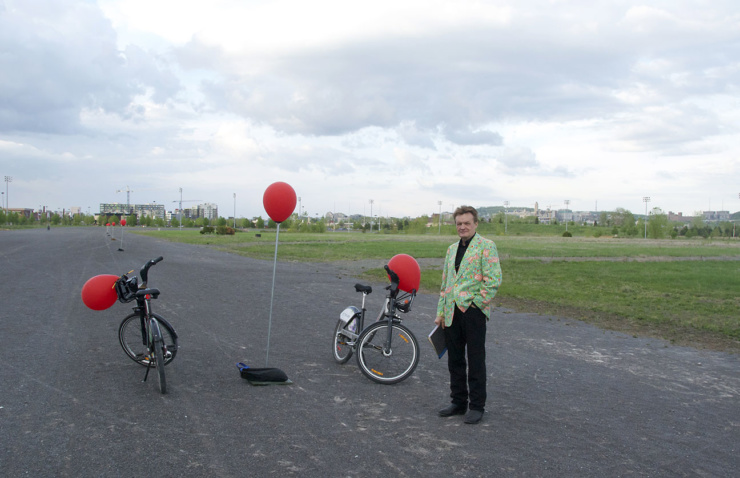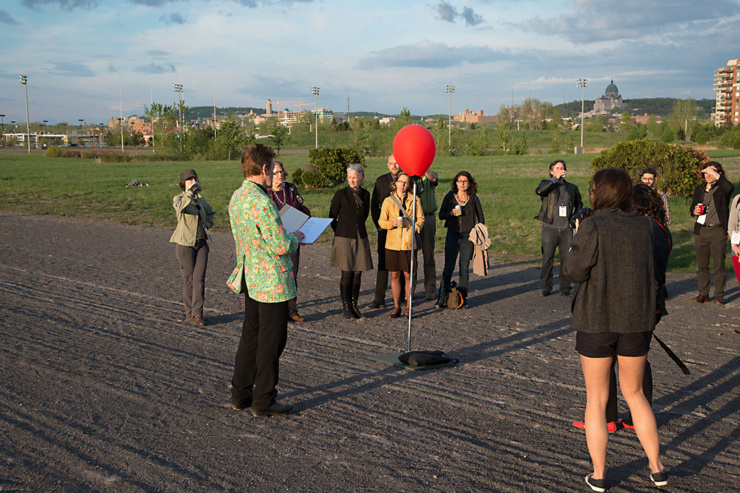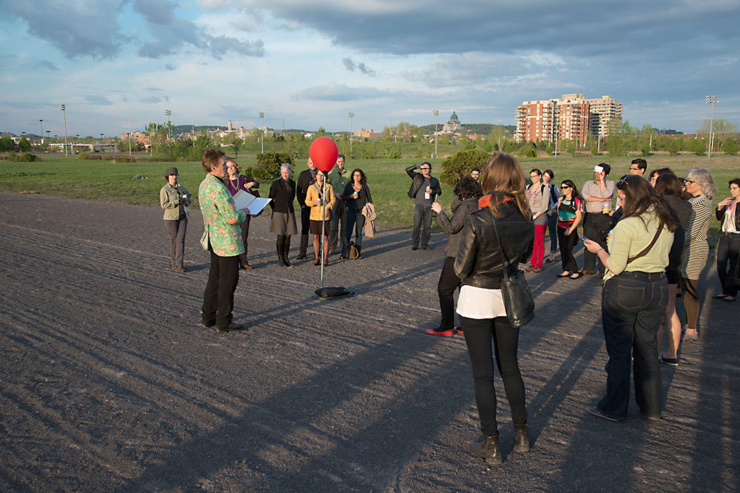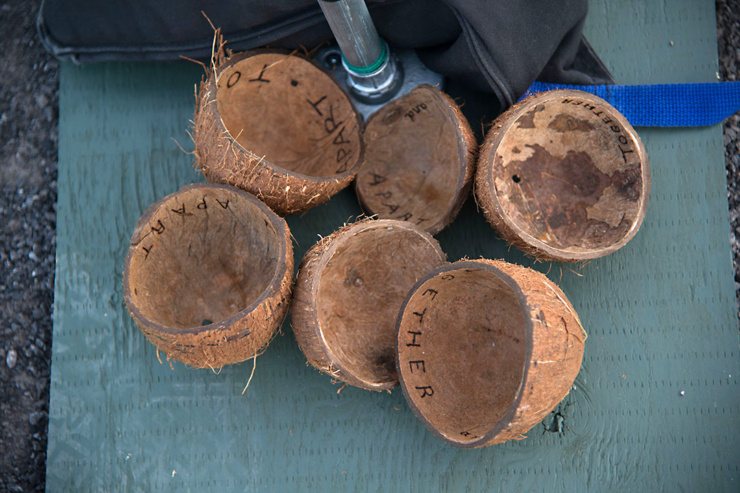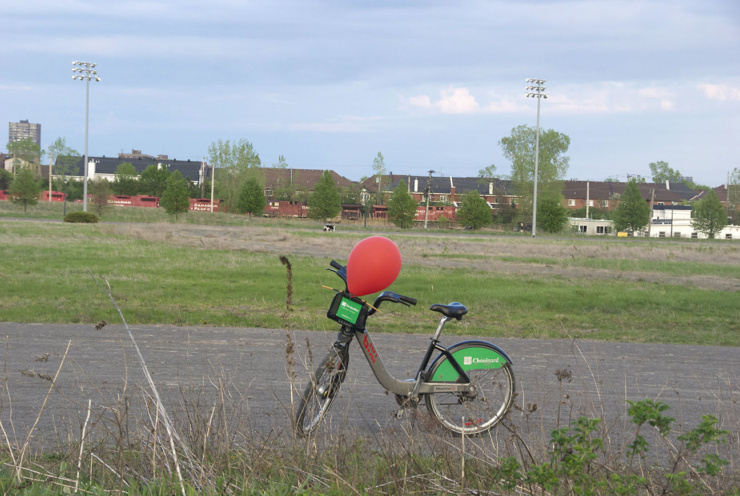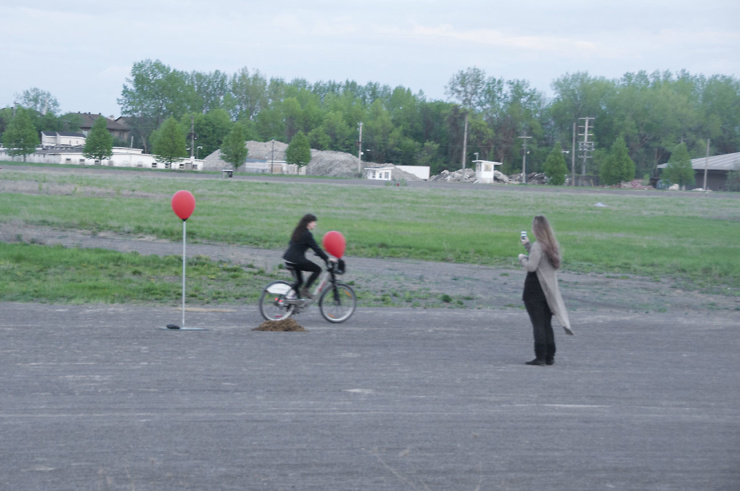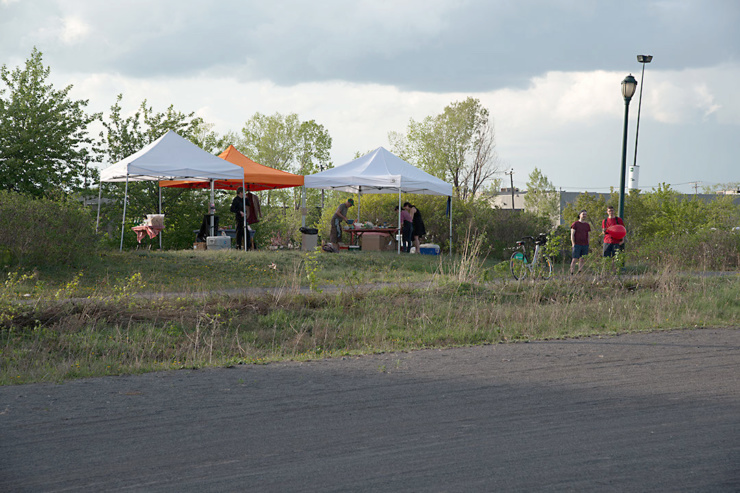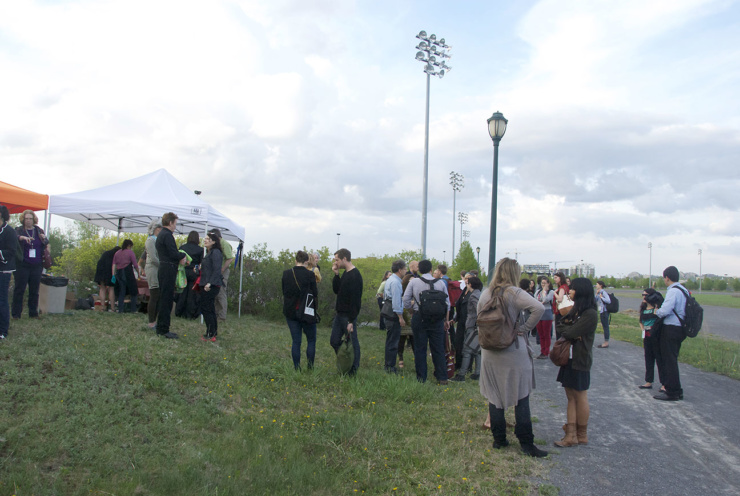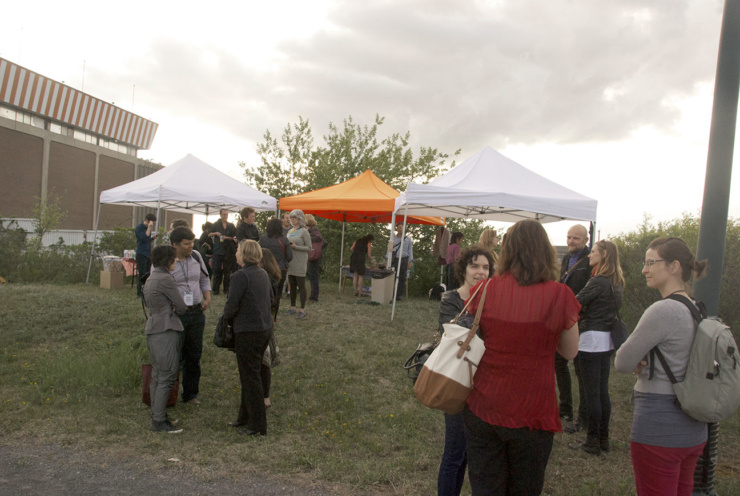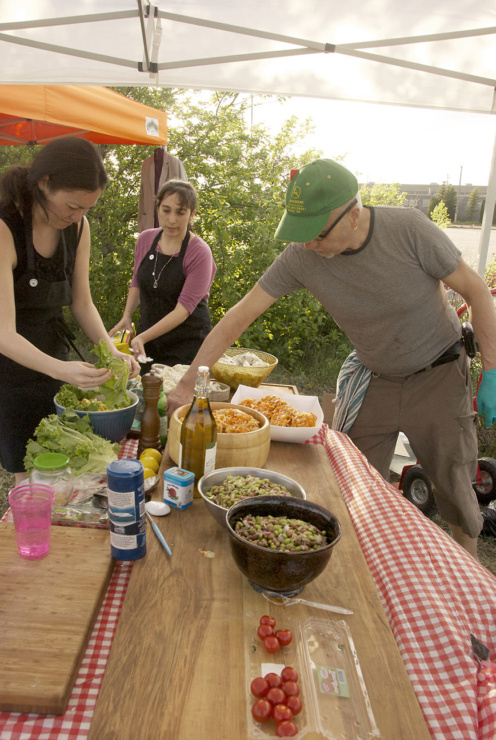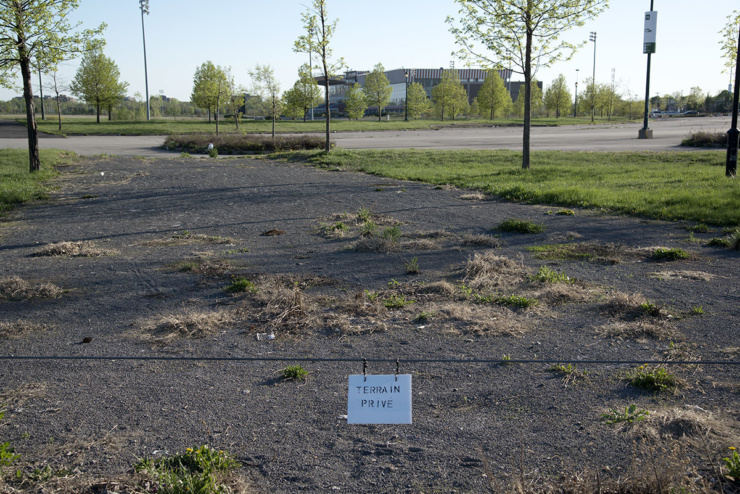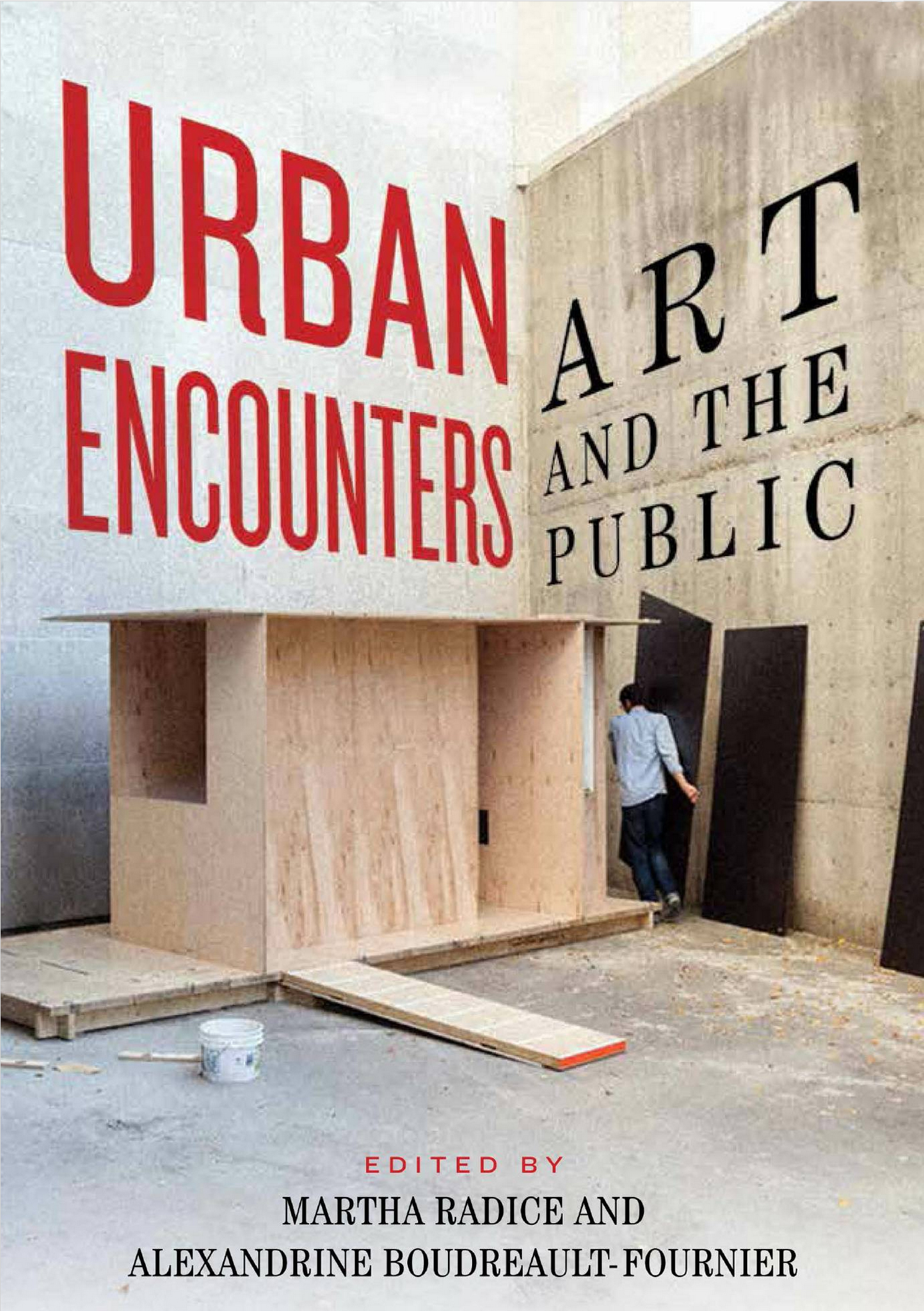In May, 2013, NiS+TS conducted a mobile media workshop for 75 people at the Montréal Hippodrome as part of the international conference Differential Mobilities hosted by MML (the Mobile Media Lab based at Concordia University).
The Montréal Hippodrome is the former site of the Blue Bonnets Raceway. Closed in 2009, Blue Bonnets was a betting arena for thoroughbred and harness racing for over 100 years. Blue Bonnets was named after the 77th Highland Regiment, whose soldiers fought in the 1760 Battle of Montréal and were known for their distinctive hats. Since 2009, the site has been used for rock concerts (including U2 in 2011), dog walking, and off-site storage for several city hospitals. A 43.5-hectare tract of currently “vacant” land, the Hippodrome is going to become a sustainable housing development, with 5000-8000 residential units planned, in a few years. Our project used geo-located audio and visual narratives sited along the racetrack, along with oversized “map pins” and other analog components such as poetry readings, bicycle races, balloons and horse manure in an exploration of the past, current and potential future uses of the site. In the end, the space itself completed the project. This urban ruin, an in-between space, or a liminal space, was supercharged with history, narrative, sound, and image.
Desire paths are trails created when people choose expedient or otherwise preferred routes, independent of the sidewalks or roadways provided for them. They are the evidence that we can go where we want to.
This project received support from 7Scenes Software.
In October 2013, members of NiS+TS presented a paper about the project at the interdisciplinary colloquium, ‘Urban Encounters: Art and the Public’, held in Halifax. A book comprised of the papers from the colloquium was published in April 2017 by McGill-Queen’s University Press. Edited by Martha Radice and Alexandrine Boudreault-Fournier, Urban Encounters: Art and the Public “reveals how art in the urban public space generates encounters that can transform both the city itself and the ways that people relate to it.” NiS+TS was delighted to have their work included in this wonderful book.
